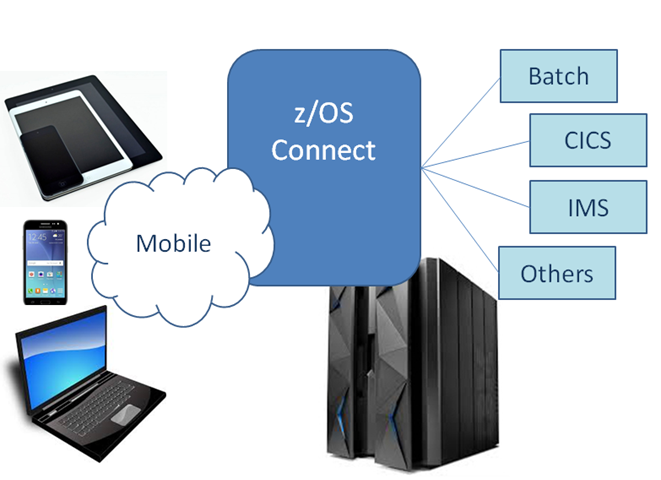Mobile computing has had a seismic impact on IT and the modern computing architecture—and it will continue into the foreseeable future.
Mobile devices—smartphones and tablets—have overtaken traditional computing devices such as desktop and laptop computers in terms of how we interact with service providers and retailers. And this transition is even more pronounced among the young. It is not uncommon for a smartphone to be used non-stop during the course of the day, not just for making calls, sending and receiving texts and keeping up with email, but also to shop for the best price, make purchases, check bank balances, make travel arrangements, and more.
Indeed, the number of mobile, networked internet devices now exceeds the global human population. This means that there are more interconnected devices out there than there are people to use them. And this situation will only worsen as the Internet of Things (IoT) picks up speed, causing us to connect everything to the internet.
But this is a mainframe-focused blog, so why am I spending time talking to you about mobile computing? After all, nobody is hoisting a z13 on their back and taking it with them like they do their smartphones and tablets, right?
While it certainly is true that the mainframe does not lend itself to be easily transported, that does not mean that the information it contains is not being made available to mobile applications. After all, the mainframe offers the pinnacle in RAS (reliability, availability, and scalability), which means that many large and important organizations host their mission critical applications and data on the mainframe. Banking, insurance, airlines, utilities, large retail organization and government agencies are all big mainframe users. And they all want to make it easier for mobile devices to get access.
The mainframe and z/OS have a long history of providing critical business value with transaction processing systems like CICS and IMS. And the transactions processed by these systems are often backed by DB2 and IMS databases. The applications and databases hosted on mainframe systems provide a rich tapestry of useful information that mobile users want to access.
But how can mobile devices connect to the System z platform environment consistently and effectively? Mobile devices use standard protocols and data format packaging, but z/OS systems vary in their support of, and requirements for these formats. Wouldn’t it be better if there were a single interface on z/OS that accepts standard mobile protocols and formats that can interact with multiple systems on the mainframe? The interface would perform any needed data conversion, authorization services, and activity tracking using SMF.
That describes z/OS Connect: providing a common and consistent interface for mobile access. No, DBAs, I’m not talking about DB2 Connect, that is something entirely different. DB2 Connect is a gateway that enables applications executing on non-mainframe platforms to access DB2 for z/OS databases. And that is helpful, but z/OS Connect provides different capabilities.
So what is z/OS Connect? You can use it to create efficient and scalable APIs for mobile and cloud applications. It is a servlet that runs under WebSphere Application Server (WAS) or inside a CICS Java Virtual Machine (JVM). It provides a RESTful interface to users that communicate through JavaScript Object Notation (JSON) messages. Basically, z/OS Connect enables connectivity between mobile applications and backend z/OS systems
Since a picture is worth a thousand words, perhaps you will find the following diagram helpful:

The z/OS Connect solution provides a common and consistent interface for mobile access to the mainframe environment. Mobile connectivity to the mainframe is enabled by configuring services that define the data transformation rules from JSON messages to mainframe language structures. The service provider is configured to tell the z/OS Connect servlet how to connect to the backend systems.
With z/OS Connect a developer can create RESTful APIs from traditional z/OS-based assets, whether or not they have z/OS coding skills. The benefit then, is that z/OS Connect makes it possible for mobile and cloud application developers to incorporate z/OS data and transactions into their applications without the need to understand z/OS subsystems.
If you have CICS, WAS, or IMS’s mobile feature pack you have access to z/OS Connect. Otherwise, it is necessary to purchase a WAS or Liberty profile license.
Another benefit for cost-conscious organizations is that z/OS Connect runs on zIIP engines, so it will not be responsible for running up your monthly software bill.
Of course, z/OS Connect offers numerous additional features including interceptors for security and auditing requirements, integration with IBM API management, and a discovery service that makes it easy to identify the services defined within z/OS Connect.
But suffice it to say, z/OS Connect makes it easy for organizations to open up their important mission critical systems and data to mobile computing applications. And that is important, because the future—not to mention the present—is all about mobility!
Regular Planet Mainframe Blog Contributor
Craig Mullins is President & Principal Consultant of Mullins Consulting, Inc., and the publisher/editor of The Database Site. Craig also writes for many popular IT and database journals and web sites, and is a frequent speaker on database issues at IT conferences. He has been named by IBM as a Gold Consultant and an Information Champion. He was recently named one of the Top 200 Thought Leaders in Big Data & Analytics by AnalyticsWeek magazine.




Great article!!
Thanks Nate… how are you doing these days?
Thanks for pointing out that z/OS Connect has some additional features like interceptors for security and auditing requirements. My workplace has been thinking about using z/OS Connect for its mobility benefits, so I’m glad to hear that it offers additional benefits as well. I learned a lot about z/OS Connect, so thanks for sharing!